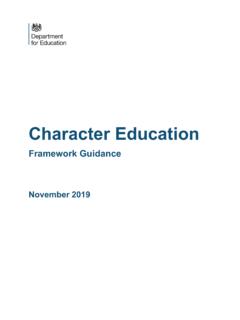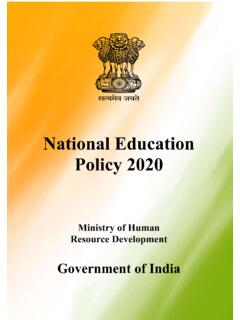Transcription of Foreword - Mermaids
1 Foreword Version 4, September 2021 Trans inclusion Schools Toolkit We are pleased to present this updated version of the Trans inclusion Schools Toolkit, agreed by Brighton & Hove City Council s Children, Young People and Skills Committee in June children and young people are vulnerable to bullying and prejudice and poor mental health outcomes if they are not effectively supported. There is no equivalent national guidance available yet in England and so we see this as an important addition to the range of equality and anti-bullying resources and guidance we provide to education settings in Brighton & Hove. This version of the Toolkit has been widely consulted on and changes made following this. We thank everyone who has contributed to the consultation process. We know from conversations with young people and their families how vital they have found this toolkit and the support our schools have offered them.
2 We believe this guidance provides ideas for policy and practice that will keep trans children and young people safe and help to create environments which prevent and respond to gender stereotypes. The Toolkit will be subject to ongoing review and development and we encourage continual discussion and engagement in this process. Please read it carefully as this is a complex area of practice where careful thought and balance of needs is required. Thank you in advance for your support. Councillor Hannah Clare, Deputy Leader, Brighton and Hove City Council, Chair, Children Young People and Skills Committee Deb Austin, Executive Director Families, Children & Learning, Brighton & Hove City Council Contents Section Title Page Acknowledgements 1 1 Introduction 3 Brighton & Hove City Council commitment to equality and inclusion 3 Overview 3 Target audience 5 Statement from the Catholic Diocese of Arundel and Brighton and the Church of England Diocese of Chichester 6 How to use the toolkit 6 Underlying principles and messages in the toolkit 7 2 Developing understanding of trans and gender questioning children and young people 8 Introduction to terms 8 Key definitions 9 3 Legal context and Ofsted framework 14 Equality Act.
3 2010 14 The Equality Act 2010 & trans pupils and students in Brighton & Hove education settings 15 Safeguarding 16 Confidentiality and information sharing 16 General data protection regulations 17 The Common Inspection Framework, Ofsted 18 4 A whole school approach 19 Introduction 19 Role of governors 19 Staff training 19 Parent and carer community 20 Policy framework 20 Transphobic and sexual bullying and harassment 21 Language 22 Curriculum including relationships, sex and health education 23 Single sex schools 27 5 Supporting the individual trans, non-binary or gender questioning child or young person 28 An individualised approach to support 28 Working with the parents, carers and siblings of trans pupils and students 29 Transition 30 Timing of transition 32 Pupils and students with additional vulnerabilities 33 Signposting to additional support 35 6 Managing specific issues for trans, non-binary and gender questioning children and young people 36 Access and safety for all 36 Toilets 37 Changing rooms 38 PE and sports 38 Residential trips 39 Uniform and dress 40 Name and pronoun changes 40 Confidentiality and information sharing reminder 43 Relationships, sex and health education (for trans children and young people)
4 43 Work experience 43 Vaccinations 43 Dealing with the media 44 7 Trans and non-binary staff and governors 45 8 Additional support 46 Appendices Appendix 1 Context statement 48 Appendix 2 National data 51 Appendix 3 Support for the toolkit from young people and their parents and carers 52 Appendix 4 Further information on the legal framework 54 Appendix 5 Example Equality Impact Assessment Tool 55 Appendix 6 Definitions bullying and prejudice 60 Appendix 7 Guide to challenging homophobic, biphobic and transphobic language and gender stereotyping 61 Appendix 8 Guide to trans inclusive policies 62 Appendix 9 Template for school level good practice statement in working with trans children 63 Appendix 10 Audit and action planning tool 1a 1 Acknowledgements This is the fourth version of Brighton & Hove City Council s Trans inclusion Schools Toolkit and reflects contributions and feedback from a wide range of sources.
5 The original 2013 Toolkit was informed by these documents: Cornwall Schools Transgender Guidance, 2012 (updated in 2015) Guidance on combating Transphobic bullying in schools, GIRES 2008 Guidance for schools on responding to sexist, sexual and transphobic bullying, DCSF 2009 For over ten years, Allsorts Youth Project has been working alongside Brighton & Hove City Council and in local schools to help them support their LGBT+ and exploring children and young people as well as encouraging and developing inclusive practise and confidence in the wider school community. We are grateful to Allsorts Youth Project for the contribution of their expertise to this toolkit and for ensuring that the lived experience of trans children and young people and their families is represented here. Cover background and the artwork throughout designed by a young person from Allsorts Youth Project.
6 2 Other contributors We would like to thank the individuals, organisations and settings that have given feedback on or suggested improvements big and small to this and previous versions of the toolkit. Not all those who contributed are listed but we appreciate the time and thought given to providing feedback which has enriched Version 4. Acknowledgment here is not a sign of endorsement. BHCC, Brighton and Hove inclusion Support Services (BHISS) BHCC, Communities, Equality & Third Sector Team BHCC, Equality and Anti-Bullying and PSHE Services BHCC, Front Door for Families & Virtual school BHCC, Human Resources BHCC, Safer Communities Team BHCC, Schools ICT Team BHASVIC Blatchington Mill Secondary Brighton & Hove primary, secondary and special school staff, governors, parents and carers and Year 10 students who responded to the online consultation Brighton & Hove s Standing Advisory Council for Religious education Brighton & Hove Youth Council Oasis, Brighton & Hove RISE, Brighton & Hove SEND Support, Special Educational Needs and Disability Consultancy and Training Sex education Forum St Bartholomew s CE Primary St Luke s Primary Stonewall Survivors Network.
7 Brighton & Hove Trust for Developing Communities Youth Team 3 1 Introduction Brighton & Hove City Council commitment to equality and inclusion Brighton & Hove City Council s commitment to equality and inclusion is unwavering. Our vision is for a more equal city where no one is left behind. Everyone deserves to be valued and treated with respect. As an organisation, we work under the Equality Act 2010 to uphold the dignity and respect of all residents in the city, children and young people in our schools, and our staff. As part of our Public Sector Equality Duty we take active steps to remove or minimise disadvantages suffered by people due to protected characteristics. We aim to meet the needs of people from protected groups where these are different from the needs of other people and encourage people from protected groups to participate in public life or in other activities where their participation is disproportionately low.
8 Brighton & Hove City Council s Equality and inclusion Strategy and approach rightly supports those who are experiencing the greatest disadvantage. We also reflect on a range of equality issues and respond to evidence identified. We do this in several ways, including using positive action to proactively address areas of underrepresentation and inequality. The approach taken within version 4 of the Toolkit aligns with that taken by Brighton & Hove City Council on gender diversity and the January 2021 Notice of Motion, Joint Green, Labour and Conservative Groups, Trans inclusion . We understand that social and political contexts and landscapes change over time. We also recognise that identities evolve and are relative to different contexts. Therefore, we remain open to learning from schools, different communities, new research, new case law, and best practice and use this to continually review our practice to ensure it remains relevant and up to date.
9 Overview education settings are diverse communities that reflect wider society and are places where children and young people learn about valuing and respecting themselves and others. Children and young people spend a great deal of time in these settings and should feel able to be themselves. Schools and education settings have a responsibility to ensure that all children and young people in their care feel safe and supported to reach their potential and be the best version of themselves. Trans and non-binary children and young people are a small group within a school community, but a potentially vulnerable one. This Trans inclusion Schools Toolkit is a Brighton & Hove City Council guide for education professionals. education settings will decide if the guidance is supportive of their values and ethos. It has been in place since 2013.
10 4 Transgender or trans is an umbrella term for people whose gender identity is different from the sex assigned [registered] at birth .1 This Toolkit uses the phrase sex registered at birth to bring the Toolkit in line with the Census 20212, aside from when quoting other sources. A person s sex registered at birth is based on physical characteristics in utero and at birth. Gender is increasingly understood as not binary but on a spectrum. Growing numbers of people are identifying as somewhere along a continuum between man and woman, or as non-gendered (neither man nor woman). While more people are identifying as non-binary, this is not a new concept and has existed for many years across different cultures around the When children and young people s understanding of their own gender differs from the expectations of those around them, they and their families can experience high levels of anxiety.







